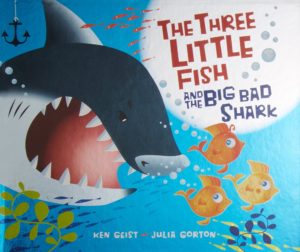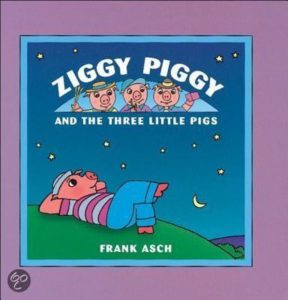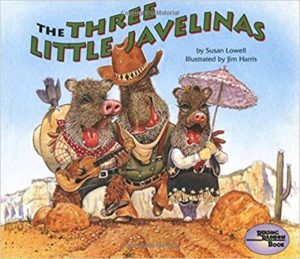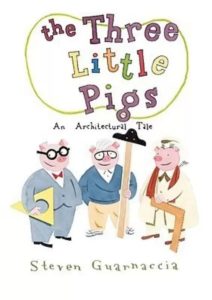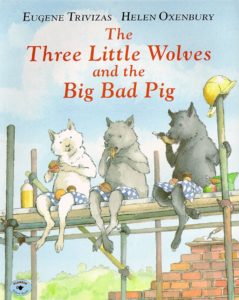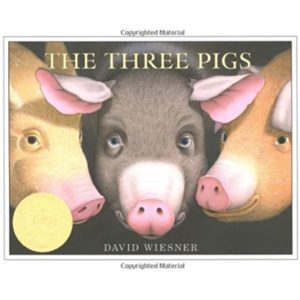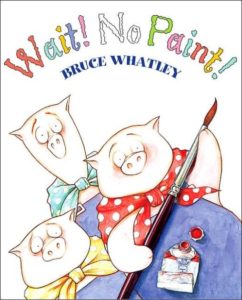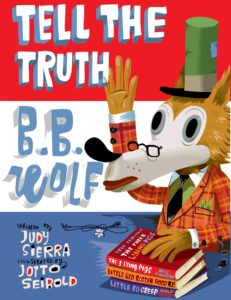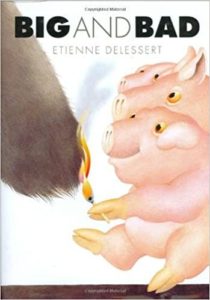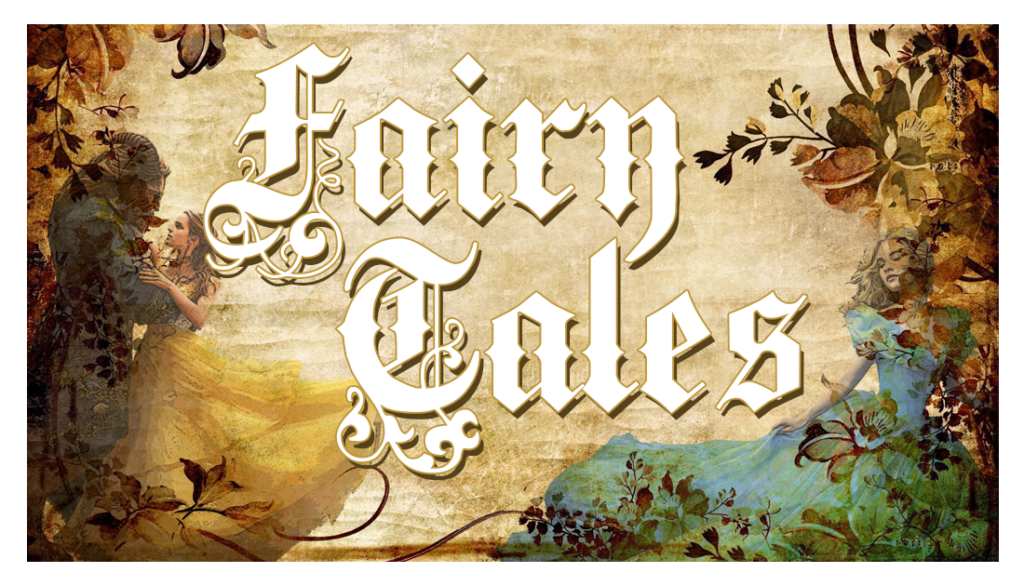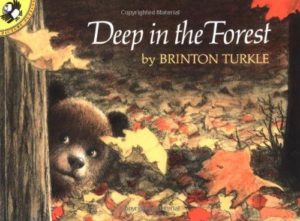
|
Brinton Turkle’s wordless Deep in the Forest (Puffin, 1992) turns the tables on Goldilocks when an adorable baby bear invades a temporarily deserted log cabin, samples the bowls of porridge, breaks a chair, jumps on the beds, and finally falls asleep. When the family returns, a furious little golden-haired girl frightens him into running back to his family. For ages 3-6. |
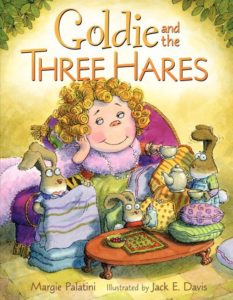
|
In Margie Palatini’s Goldie and the Three Hares (Katherine Tegen Books, 2011), Goldilocks – pursued by the Bears – falls down a rabbit hole and hurts her foot. The three resident Hares (Papa, Mama, and Baby) do their best to help, but are soon pop-eyed with dismay since Goldilocks is a dreadful, demanding guest. Soon they’re trying everything they can think of to get her out the door – but nothing works until Baby Hare calls back the Bears. For ages 4-8. |
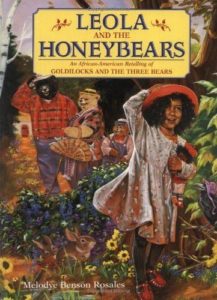
|
In Melodye Rosales’s Leola and the Honeybears (Scholastic, 2000), an African-American version of the story of Goldilocks and the bears, Leola – a charmer in a red hat – wanders into Pine Hollow Woods, is scared by Ol’ Mister Weasel, and shelters in the empty Honeybears’ inn. There, in spite of her grandmama’s instructions, she makes herself thoroughly at home – which leads to trouble when the Honeybears return. The kindly Honeybears, however, forgive her and send her home with a basket of treats for her grandmamma. For ages 4-8. |
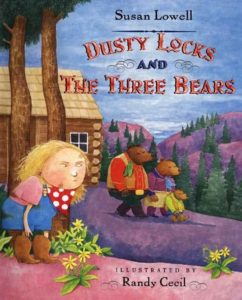
|
In Susan Lowell’s Dusty Locks and the Three Bears (Owlet, 2004), Dusty Locks, a grubby far-west Goldilocks who hasn’t had a bath in a month of Sundays, runs away from home and, after chasing a skunk, ends up in the bears’ log cabin. The bears have gone on a walk while waiting for their beans to cool, and in their absence Dusty Locks, who is hungry enough to eat a saddle blanket, wreaks havoc. For ages 4-8. |
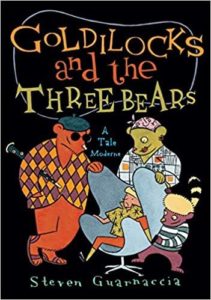
|
Steven Guarnaccia’s Goldilocks and the Three Bears: A Tale Moderne (Abrams Books for Young Readers, 2010) provides Goldilocks with far more than three chairs and three bowls of porridge. These sophisticated bears (Papa wears a beret and sunglasses, and totes a clarinet) occupy a highly artistic house, furnished with avant-garde pieces by such designers as Charles and Ray Eames and Arne Jacobsen. Endpapers have sketches of all the bears’ furniture and other items, each labeled with the designer’s name. For ages 4-8. |
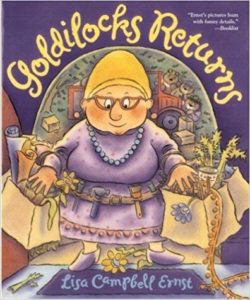
|
In Lisa Campbell Ernst’s Goldilocks Returns (Simon & Schuster Books for Young Readers (2003), fifty years have gone by since the porridge-eating, chair-breaking incident, but the now-middle-aged Goldilocks still feels guilty. Planning to do something nice for the Bears, she returns to their little house, finding, providentially, that the bears have gone for a walk. She then sets about redecorating, re-stuffing the mattresses, and replacing their unhealthy porridge with rutabaga bars and celery juice. The Bears, when they return, are horrified by the changes – but the next day on their walk they spot a golden-haired little girl heading toward their door. They stroll on, clearly hoping that she’ll destroy it all again. For ages 4-8. |
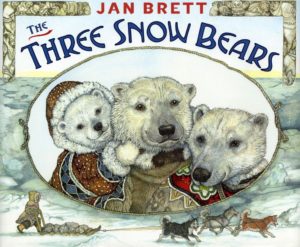
|
Jan Brett’s exquisitely illustrated The Three Snow Bears (Putnam Juvenile Books, 2007) is a Goldilocks tale set in the far north, where Aloo-ki, a little Inuit girl, loses her sled and sled dogs (they float away on an ice floe) and, while searching for them, happens upon an empty igloo. Inside, she samples soup, tries on boots, and finally falls asleep in the littlest bed. Then the bears – who have in the meantime rescued her dogs – come home. For ages 4-8. |
|
To make a Brett-style Three Snow Bears mural, see instructions and printables here. |
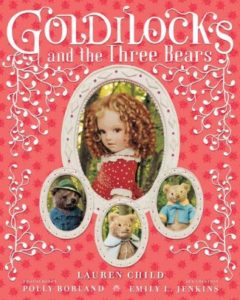
|
Lauren Child’s Goldilocks and the Three Bears (Puffin, 2009), a collaboration with photographer Polly Borland and theater designer Emily Jenkins, is a delightful retelling of the traditional tale, illustrated with photographs of a curly-headed doll in red Mary Janes and three stuffed bears, all in elaborate miniature settings. The Bears’ cottage, for example, has bear-patterned curtains, an apple bin, carved furniture, and painted porridge bowls. For ages 4 and up. |
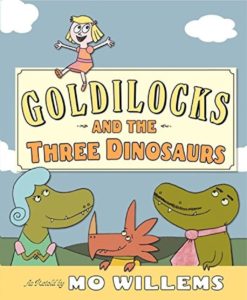
|
In Mo Willems’s hysterical Goldilocks and the Three Dinosaurs (Balzer + Bray, 2012), the dinosaurs make the beds, arrange the chairs, set out three tempting bowls of chocolate pudding heated to various temperatures, and go for a walk. Says Mama Dinosaur, “I SURE HOPE NO INNOCENT LITTLE SUCCULENT CHILD HAPPENS BY OUR UNLOCKED HOME WHILE WE ARE…uhh…SOMEPLACE ELSE!” Luckily visiting Goldilocks wises up before she becomes a dinosaur bon-bon. For ages 5 and up. |
|
For more resources, see Great Bears. |
